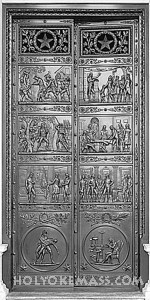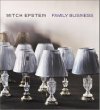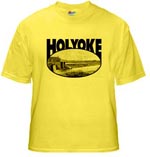by Laurel | May 24th, 2010
While this is not Holyoke specific, I found this article very interesting and hope HolyokeMass.com readers agree.
May 24, 1903
Melzar Hunt Mosman Follows His Father in Ornamenting Big Doors at Washington.
It may be some time before Chicopee will produce a man who sill sit in the halls of Congress as the representative of the 2d Massachusetts district, but it already has to its credit one whose name will be remembered as having executed the handsome bronze doors which ornament the east portico of the Senate extension of the capitol. This man was Silas Mosman, and now his son Melzar H. Mosman is about to undertake a similar piece of work, from models which were made at the same time as those for the Senate wind, to be hung on the House wing at the capitol. It had been originally intended to have both doors completed at the same time, but Congress failed to make a sufficient appropriation to carry out the plan, and after several efforts a bill was passed in February appropriating $45,000 for the completion of the doors to the House extension portico. Mr. Mosman had no competition in securing the contract for making the new doors, the work which he and his father performed 40 years ago having been sufficient guarantee of his ability to produce the new doors in a manner as satisfactory as the first. The models for the doors that are now to be made were created by William Rinehart many years ago, and have been carefully stored in the basement of the capitol since. They are now on their way to Chicopee from Washington, and will probably arrive next week. Mr. Mosman found among his old modes some of the border of the old doors, and he is already reproducing those before the arrival of the models for the doors themselves. It is no small undertaking, as it will require fully three years to perfect the doors ready to be shipped to Washington. The models alone cost the government $8960, and Mr. Mosman will receive 45,000 for making the doors. The doors on the Senate wing cost the government considerably more than the new doors on account of the greatly decreased price of copper, which can now be bought for 15 cents a pound, whereas it cost 55 in 1860.
The accompanying image is an image of the new doors, reproduced from the Architect of the Capitol website. The architecture corresponds with that of the old doors made in 1863, the only difference being the representative figures. The first figure on the left pictures the attack of the Tories and Indians under Col. Butler at the massacre of Wyoming, the second illustrates the battle of Lexington, the third the presentation of the flag to a South Carolina general officer and the fourth, the call of Montgomery at Quebec. On the right the first panel illustrates the signing of the Declaration of Independence, the second the treaty of Paris, the third Washington’s farewell to his officers and the fourth Benjamin Franklin seated at his desk in study. The upper most panel over each half of the door, containing a center star surrounded with a wreath of oak leaves, is perforated so as to admit light and air. These doors in ornamental bronze, give an illustration of the history of the discovery and settlement of the western world, with the birth of American independence and the progress of constitutional liberty. The models for the work were the conception of Thomas Crawford, the American Sculptor, whose work, while not favorably compared with that of modern sculptors, was foremost among sculptors of his days. While Mr. Crawford must be given credit for the design, the models for the doors now to be made were really executed by William Rinehart, after the death of Crawford in 1857.
The commission given Crawford for two bronze doors, one for the Senate extension portico and the other for that of the House, was determined on during the administration of Franklin Pierce. At the same time an order was given Rogers for his door illustrating the life of Columbus. Mr. Rogers completed his models first and they were given to the celebrated Munich founder, F. von Muller, to be cast, as it was supposed that the work could not be done in America. Mr. Crawford had proceeded with one of his doors only so far as to complete the drawings, when he was stricken with a disease which caused his death, and the work was completed in plaster by William H. Rinehart, who was an assistant in Crawford’s studio in Rome.
At the time the models were finished the country was in the civil war, and the Munich founder, who cast the Rogers door refused to begin on the Crawford door unless the treasury department would deposit a sum of money in gold to his credit in Europe, to await the completion of the contract. The department would not do this and subsequently the models were sent back to this county in 1863. They were in badly damaged condition because of the careless packing, but the Ames foundry in Chicopee undertook to cast the door, though there were a many doubts as to their success in the undertaking. Silas Mosman worked over the models for more than a year before they were given their former sharpness, and it was under his superintendence that they were afterward cast in bronze and finished. To make the casting at the Chicopee foundry, it was necessary that expensive additional apparatus should be procured, and that expert artisans in various branches of work should be engaged. The Messrs. Ames asked from the government an advance on their investments and expenses required to cast and erect the door, of one third was accepted. The amount given them at the expiration of the contract was a little less than $50,000. This was one of the first works of the Ames foundry which gave it a national reputation, but as long as it continued in business it produced many other works of art which gave its managers an equally wide reputation as artisans in bronze.
Silas Mosman, whose genius made it possible to carry out the plans of the designer in Chicopee, was a man of exquisite taste, and his careful, painstaking work made him one of the chief bronze workers of the country in his day. The son, Melzar H. Mosman, who is to make the new doors, worked with his father when the old doors were made, and under his father’s guidance executed a large part of the work. Since that time he has created many artistic pieces of statuary and monumental work, which have placed him in the front rank with the bronze workers of the day. The little brick shop on Cross street does not present an imposing appearance, nor does it appear to be a hive of industry, for Mr. Mosman does all of his own work and may be found working away at his bench from morning until night every day. He feels the importance of the work which he is about to undertake, and the work he will do will undoubtedly be a credit to himself to the city of Chicopee and to the country at large.
From The Springfield Republican.









